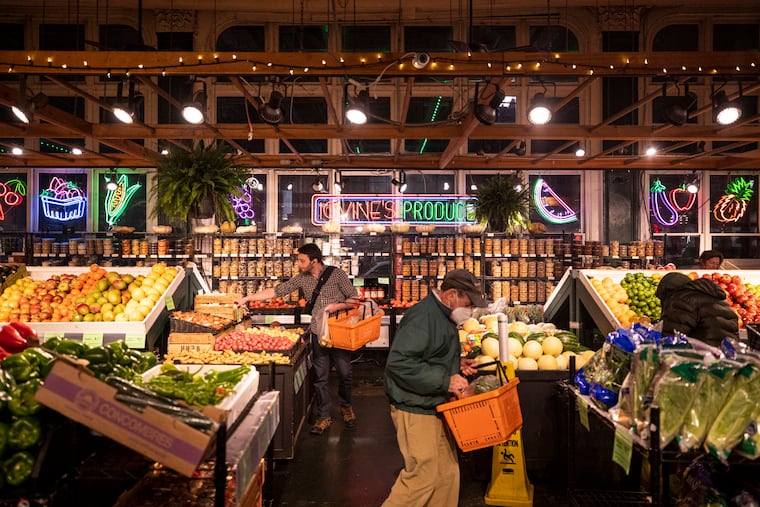Creating a great public space could be a slam dunk | An Arena for All
Great spaces are intentional. 76 Place runs the risk of just being another version of the Gallery or Fashion District — enclosed enclaves that turn their back on the street and depress civic life.

Imagine a great public space that stretches from Market to Filbert Street: capturing the energy of Reading Terminal Market, connecting with Chinatown, encouraging people to linger, and, ultimately, helping to reestablish Market Street as Philly’s Main Street. The proposed arena could be this space, but great spaces are intentional. How can we make sure 76 Place becomes one of the city’s cherished civic spaces?
As currently designed, the interior public spaces of 76 Place appear as large corridors designed for herding attendees into, through, and out of the arena, while the retail spaces are limited, some little more than mall-like kiosks. These are not dynamic and distinctive spaces. The entrance to Jefferson Station is nothing more than an enclosed fire stair at the rear of the ground level.
These design choices signal a minimal commitment to public access and a limited intention to integrate the arena into the existing urban fabric. It is a missed opportunity to create a truly civic-minded arena that connects, rather than isolates.
In not prioritizing open, accessible, welcoming, and vibrant public spaces that engage both eventgoers and the public, 76 Place runs the very real risk of just being another version of the Gallery or Fashion District — enclosed enclaves that turn their back on the street and depress civic life.
We can look to some of Philadelphia’s great public spaces for inspiration.
Reading Terminal Market is often called the heart and soul of the city. Home to independent small businesses, it serves as a gathering place for people to eat, shop, and socialize. It has been called a “cosmopolitan canopy” by the eminent sociologist Elijah Anderson; an “urban island of civility” where diverse people come together. Why not extend the experience of Reading Terminal down Market Street into the public spaces of 76 Place, providing much-needed space for local vendors, craftspeople, and artisans while attracting people from all walks of life?
The Cherry Street Pier offers its own version of an authentically Philadelphia public space. The year-round space on the Delaware River waterfront provides a collection of studio, garden, market, event, and dining spaces. Within the space, programming is driven by the arts community, showcasing the creativity, vibrancy, and diversity of our city. Can we bring this sense of soul to the arena’s public spaces? Tapping Philadelphia’s rich history of basketball and the strength of our creative communities can foster connections between the arts and sports.
Can we create an iconic meeting place — the 21st-century version of the Eagle at Wanamaker’s Grand Court?
This lack of intentionality in placemaking extends to the exterior of the arena, as well. The current design features a minimal outdoor public space at 10th and Market Streets — a space that is nearly six times smaller than Comcast Center Plaza, and almost 30 times smaller than Dilworth Park. At 76 Place, the constrained scale of the proposed public space is nothing more than an extended sidewalk along Market Street, limiting the creation of a true public gathering space and raising questions about safety during postgame surges of fans exiting the arena.
Can we learn from the thoughtful urban design of the Market East complex on the 1100 block of Market Street? Can we create public spaces at 76 Place that make the arena a hub of activity? Can we demonstrate Philadelphia’s leadership in the art of design and placemaking to create a lively urban ensemble — a civic gateway — successfully connecting various nodes of activity and engaging with the nearby neighborhoods — most notably, Chinatown?
Think about interior spaces with open seating, art installations, and flexible-use areas making the building a destination beyond game days. Outdoors, picture a true urban plaza of scale and significance commensurate with the needs of the site and the ambition of the Sixers. This could be an urban oasis with greenery, seating, and programming serving to integrate the arena into the urban fabric of the city, becoming a destination for fans and the people of Philadelphia.
With 76 Place, Philadelphia has the opportunity to create a space that is symbolic, ceremonial, and social. It can encourage community, be comfortable and safe, and, importantly, memorable. With these qualities, the arena could become one of Philadelphia’s great places, befitting both a world-class city and a team as determined and committed as the Sixers.
Harris M. Steinberg, a fellow of the American Institute of Architects, is the executive director of the Lindy Institute for Urban Innovation at Drexel University. To learn more about these principles and our analysis, visit the Lindy Institute’s Civic Design Studio website.